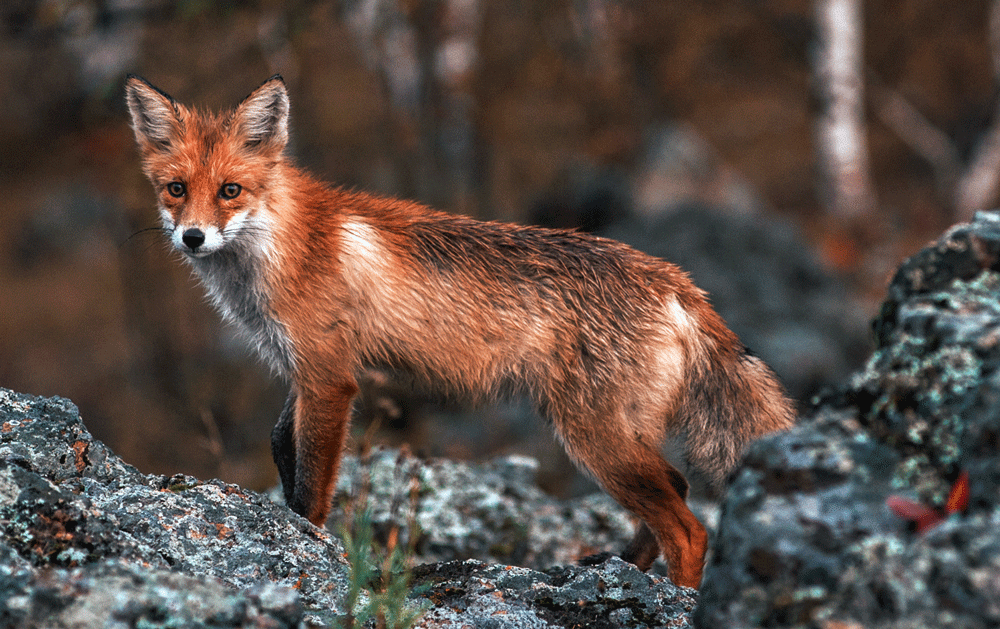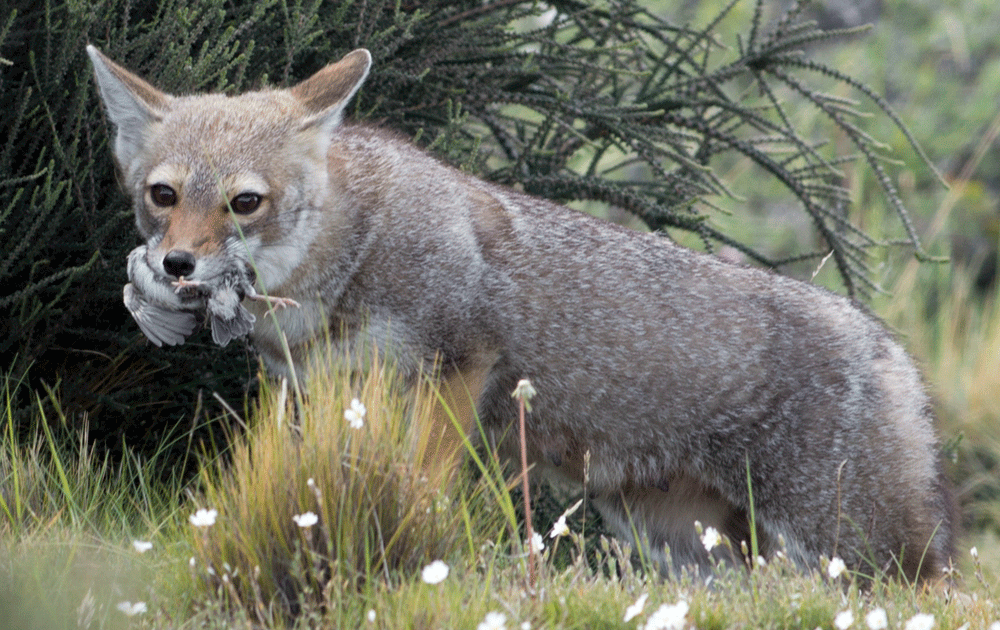
Foxes are omnivorous mammals belonging to the canine family. Their skull is flat while their ears are a long pointed triangular shape. They have a small to medium-sized tail. The tail is bushy and resembles that of a dog. Their tail is also called a brush. They have a narrow snout which provides them with a heightened sense of smell. They have long thin legs that help in differentiating them from wolves and other similar animals.
Foxes are intelligent animals that are an essential part of a healthy wildlife system. There are many different species and they can be differentiated based on their appearance. One species of fox can be differentiated from the other based on its track. This is possible because their claws and size of paws are different. The droppings of foxes are different from any other animal. They make several sounds according to the situation and what they are looking for. Lastly, since they are omnivores, their diet consists of both plants and animals.
Fox Solutions
Fox Description
Appearance: There are many different species of fox and it is very common to confuse them. The top twomost widespread foxes are red foxes and gray foxes. You can differentiate amongst them basedon their appearance.
Red Fox
Gray Fox
Red Fox
 The trickiest aspect of red foxes is the fact that they can come in colors other than red. Even though red is the most common color, they can be black and gray. If it’s albino, it can be white too. You can discern red foxes based on their legs. They have black legs along with ears that are pointy and black-tipped. Their tail is white and is very fluffy. Their throat and chin are a mixture of white and gray. Their face resembles a dog, unlike that of gray foxes.
The trickiest aspect of red foxes is the fact that they can come in colors other than red. Even though red is the most common color, they can be black and gray. If it’s albino, it can be white too. You can discern red foxes based on their legs. They have black legs along with ears that are pointy and black-tipped. Their tail is white and is very fluffy. Their throat and chin are a mixture of white and gray. Their face resembles a dog, unlike that of gray foxes.
Gray Fox
 Gray foxes can also come in different colors besides gray. These colors include red, brown, and gray. However, you can still differentiate them from red foxes based on a few elements. First, unlike the red foxes, gray foxes have a black-tipped tail. Also, the gray fox resembles a cat, unlike the red fox that resembles a dog.
Gray foxes can also come in different colors besides gray. These colors include red, brown, and gray. However, you can still differentiate them from red foxes based on a few elements. First, unlike the red foxes, gray foxes have a black-tipped tail. Also, the gray fox resembles a cat, unlike the red fox that resembles a dog.
Tracks: Foxes can be found vastly around North America. These areas include forests, deserts, fields, etc. No matter where their habitat is, they can easily be recognized by the footprints they leave behind. Their footprints are oval. They have four toes in a triangular shape. Each toe has a claw directly in front of it. However, sometimes the claw may not be very visible. Generally, the tracks of all the species of foxes are the same but they can be categorized differently.
Red Fox
Gray Fox
Red foxes have very furry feet and this affects their tracks. It affects the details that are visible on the surface. Their paw pads are also small in size which further obscures the details. Their footprints only measure 1.75-2.5 inches in length while the width is around 1.5-2 inches.
Gray foxes have less fur on their feet. This makes their footprints detectable and easy to recognize. The tracks even show the toes perfectly as opposed to red foxes. It is also possible for gray foxes to pull back their claws. In such a situation, the marks of the claws are not visible on the surface. The size of the footprints also differs. The footprints are comparatively smaller; it is only 1.25-1.75 inches in length while the width is only 1-1.75 inches.
Droppings of every animal differ from one another. Similarly, droppings of foxes are dissimilar to any other mammal. Foxes use their droppings to mark their zone and territory. It can be on many different surfaces such as rocks or tree logs. Sometimes the droppings can even be on dead animals or the toys left in your yard. In appearance, the droppings are about 2 inches long and are twisted. On close examination, you will be able to spot undigested remains. These can include berries, grasses, fruits, hair, seeds, etc. However, the droppings of foxes also differ according to their habitat. If they are urban foxes, the droppings can resemble that of a dog. This is because their diet consists of a lot of meat and bread. However, rural foxes consume animals and their droppings are pointy towards the end. Lastly, fresh droppings have a distinct smell. It is often described as ‘foxy’.
Every animal makes a different sound and this is how we are able to recognize it. Foxes are not limited to any one type of sound. They make a variety of different sounds depending on the situation. Foxes prefer to hunt more like cats because of their small frame. This is one of the reasons why it sounds is an amalgamation of both cats and dogs. Scientists have discovered a total of 12 different sounds adult foxes make. The few sounds it makes are stated below.
Raspy bark: This is very much like a barking sound with a purpose. Foxes make this sound to communicate with other foxes and make others aware of its presence.
Eerie vocalization: This is a high-pitched sound. It resembles the sound of a scream. This howl is used by foxes for a different purpose. They make use of this sound to attract and call a mate.
Foxes eat a variety of food. They are omnivorous mammals and hence eat both plants and animals. Their diverse range of food sources include leaves, berries, seeds, birds, and rabbits. The diet for urban and rural foxes differ. Urban foxes will eat whatever is available to them. They will eat birds, mammals, and even invertebrates like caterpillars and beetles. Rarely, they will even look into your garbage to search for anything to eat. If you have a fox visiting your backyard in search of food, it is best to keep your pets inside to prevent it from being the fox’s next meal. The chances of this happening are slim but precaution is still necessary.
 Foxes are omnivorous mammals that are usually seen as sly and dangerous. The first thought you may have when you hear of a fox is that it will harm you. However, reality differs. Even though a lot of people fear foxes, they do not pose any threat to you. Their source of food is mainly livestock that includes chickens, rabbits, etc. The fox attacks that people usually fear are not that common. You will only witness a fox attacking a human when it is cornered or feels it has to protect itself and thus acts in self-defense. A caged or trapped fox is likely to attack. Otherwise, foxes are peaceful creatures that do not harm humans.
Foxes are omnivorous mammals that are usually seen as sly and dangerous. The first thought you may have when you hear of a fox is that it will harm you. However, reality differs. Even though a lot of people fear foxes, they do not pose any threat to you. Their source of food is mainly livestock that includes chickens, rabbits, etc. The fox attacks that people usually fear are not that common. You will only witness a fox attacking a human when it is cornered or feels it has to protect itself and thus acts in self-defense. A caged or trapped fox is likely to attack. Otherwise, foxes are peaceful creatures that do not harm humans.
Foxes fear humans more than humans fear them. Their instinct is to run away and hide if they sense the presence of you around them. They prefer to flee than to stay and fight humans. However, if any fox does not run away when it hears or sees you, it is because it has learned to associate you with a potential source of food. In that case, you can make a loud noise or whistle at them. This will make them run away and leave you alone.
Foxes may not attack you but they may spread diseases that can cause a lot of harm.
Rabies
The most common disease is rabies. If foxes are carrying rabies and you come in contact with them, it can be deadly. In that case, you should go to the doctor immediately. Oher dangerous diseases can spread through foxes as well.
Mange
Dogs and humans can catch mange from foxes. The chances of this happening are slim but it is still possible. It is not a deadly disease. If your dog catches it, you can contact the vet and get your dog treated without any difficulty. If you come in contact with a mange fox, you can develop a rash due to an allergic reaction. The rash easily goes away in a few weeks. However, it can develop further if you continue coming in contact with a mange fox. Hence, it is advised to keep a distance.
Toxocariasis
This is a type of roundworm. It usually affects the intestines of foxes and its eggs are passed out through feces. You can be affected if you come in direct contact with the infected feces or through the contaminated soil. The disease is visible through infections. Infections can vary from respiratory infections to eye infections. Children are highly at risk because they play outside and often put small toys and items in their mouths which can contain these eggs. However, it is treatable once diagnosed. It is best to take proper hygiene steps and clear up fox feces in a proper manner.
Final Take
Foxes are not dangerous animals. They rarely attack and if they do it is usually to protect themselves. They can be carriers of various diseases and parasites. Hence, it is best to keep a safe distance from them and anything that can contain the infection. Most of the diseases can be treated once properly diagnosed but as they say, precaution is better than cure.
